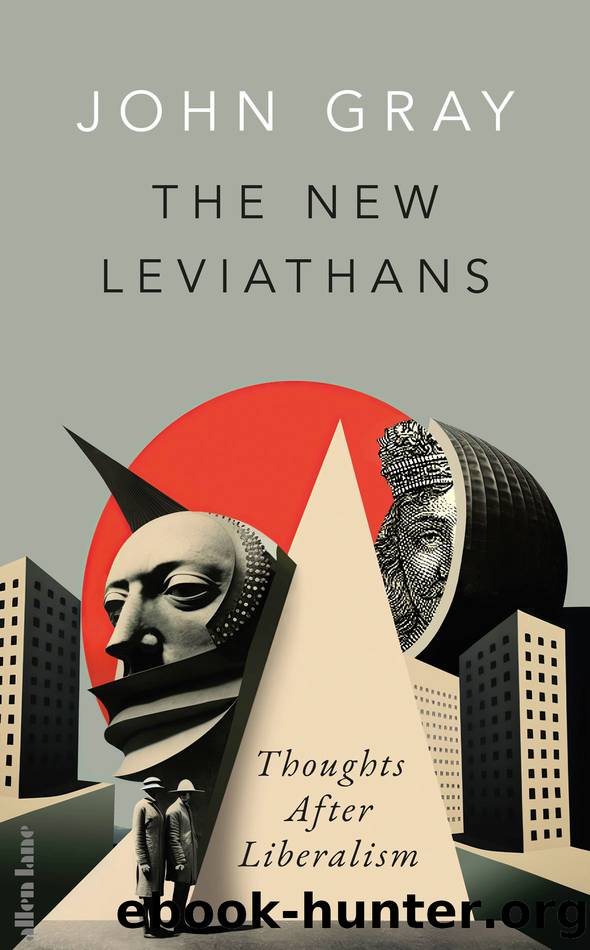The New Leviathans by John Gray

Author:John Gray [Gray, John]
Language: eng
Format: epub
ISBN: 9780141999449
Publisher: Penguin Random House UK
Published: 2024-01-04T00:00:00+00:00
Czapski concludes: âShe was a shadow of herself as she told me this story on the train, her eyes flashing with terror.â59 His tone is restrained and almost calm. Episodes of the sort the old woman reported were commonplace at the time.
While in Moscow, Czapski looked in bookshops for relics of a world that had passed away. He found a beautifully bound 1868 edition of Baudelaireâs Les Fleurs du mal, which he bought for ten roubles. (A pound of butter would have cost thirty roubles.) He met the poet Anna Akhmatova, whose husband, Nikolay Gumilov, had been shot in 1921. She âwore a dress made of very poor material, somewhere between a sack and a pale habit ⦠and spoke little, in a slightly strange tone, as if half joking, even about the saddest thingsâ.
Czapskiâs attempt to discover what had happened to his fellow officers yielded nothing. Mass graves were reported near Katyn in 1942 and 1943, and used in Nazi propaganda in an attempt to split the Allies. The Polish government raised the issue with the American and British authorities, who colluded with the Soviets in denying any knowledge of the killings. For the rest of his long life (he died at the age of ninety-six) Czapski was troubled by why he had not been shot along with his fellow prisoners.
Beyond this tragedy and his painting, what mattered most to him was Ludwik Hering, whom he called his âmost important and personal living connectionâ. Czapski and Hering were separated by the start of the Second World War, but the two men corresponded for thirty years, writing hundreds of letters to one another. Having worked during the Nazi occupation as a nightwatchman in a tannery near the Warsaw Ghetto, Hering wrote a story about the 1943 uprising, ending with the words: âthe ruins of the ghetto tremble like printed words on a piece of paper that is coming apart.â After the story appeared in 1946, he stopped writing.
When they met again in Paris in 1972, Czapski tried to lift his friend from despair. Much of their time together was spent arguing about Dostoevskyâs Demons, with Czapski claiming that the novel kept open the possibility of a meaningful life and Hering countering that it left no hope. In 1984, suffering from cancer, Hering killed himself. Czapski drew a line through the entry in his journal where he recorded his friendâs death. But he left the entry legible, preserving his sense of loss and his gratitude for what his friend had given him.
Living in a modest studio in Paris, Czapski was producing paintings saturated with light and colour into his late eighties. Asked why his work featured âlonely people, deserted café tables, faces half concealed in the metro, minute daily events glimpsed in passingâ, he replied: âEach time, it is almost nothing. But that âalmost nothingâ signifies everything.â
What this meant becomes clearer in a short piece recounting Czapskiâs travels on trains when he was searching for his comrades:
Those days, torn from a feverish routine, from obsessive activity, I now remember as happy ones.
Download
This site does not store any files on its server. We only index and link to content provided by other sites. Please contact the content providers to delete copyright contents if any and email us, we'll remove relevant links or contents immediately.
The remains of the day by Kazuo Ishiguro(8746)
Tools of Titans by Timothy Ferriss(8157)
Giovanni's Room by James Baldwin(7116)
The Black Swan by Nassim Nicholas Taleb(6948)
Inner Engineering: A Yogi's Guide to Joy by Sadhguru(6633)
The Way of Zen by Alan W. Watts(6452)
Asking the Right Questions: A Guide to Critical Thinking by M. Neil Browne & Stuart M. Keeley(5577)
The Power of Now: A Guide to Spiritual Enlightenment by Eckhart Tolle(5544)
The Six Wives Of Henry VIII (WOMEN IN HISTORY) by Fraser Antonia(5358)
Astrophysics for People in a Hurry by Neil DeGrasse Tyson(5095)
Housekeeping by Marilynne Robinson(4253)
12 Rules for Life by Jordan B. Peterson(4218)
The Ethical Slut by Janet W. Hardy(4147)
Double Down (Diary of a Wimpy Kid Book 11) by Jeff Kinney(4145)
Skin in the Game by Nassim Nicholas Taleb(4123)
Ikigai by Héctor García & Francesc Miralles(4044)
The Art of Happiness by The Dalai Lama(4009)
Skin in the Game: Hidden Asymmetries in Daily Life by Nassim Nicholas Taleb(3868)
Walking by Henry David Thoreau(3858)
